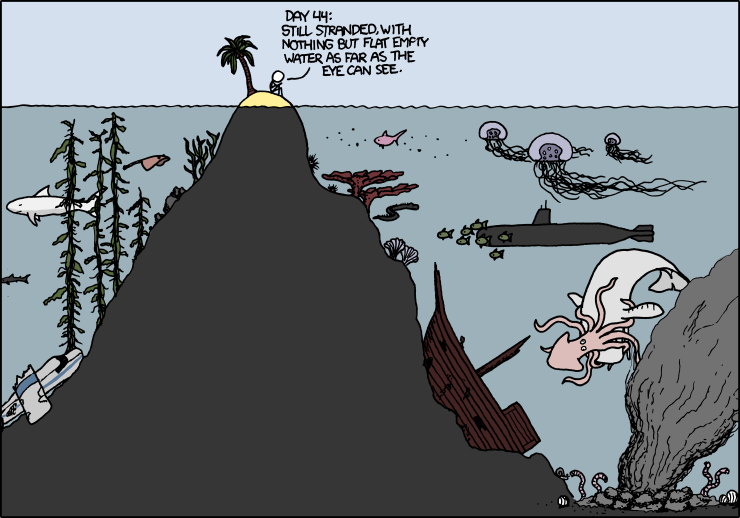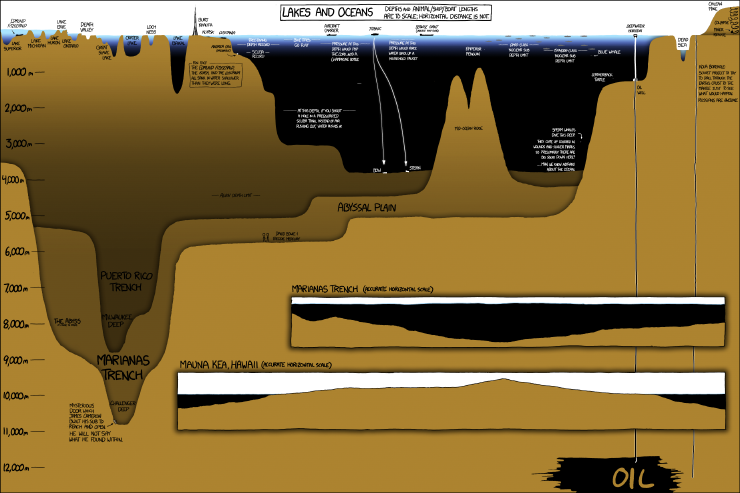By Amanda Holdman, MS, GEMM Lab Alumni 2016
I graduated in March 2017 from the GEMM lab at Oregon State, with a Master’s of Science in Wildlife Management. Graduate school was finally over! No more constant coffee refills, popcorn dinners and overnight library stays; I had submitted my final thesis and I was done! Graduate school was no walk in the park for me, and finishing a master’s or a doctorate degree for anyone is no easy feat! It takes years of hard work, commitment, long hours, and a dedication to learning. I remember feeling both excited and a bit disoriented to be done with this phase of much stress and growth. After submitting my thesis, I took a much-needed month off to unknot the muscles in my back and get myself reacquainted with sunlight. The breath of fresh air was exactly what I needed to recover, but it took no time at all for a new type of challenge to emerge: the arduous task of finding a job.
I did what most job seekers do, I sat behind my computer applying for opportunities, hit as many roles as I could, and hoped for the best. Days turned into weeks and weeks turned into months. I was getting desperate, I resorted to applying for a whole spectrum of roles – consulting, project management, administration, youth team leader – hoping that something would land. Soon enough, almost 3 months had passed and I was still in the same spot as before. I was ready to throw in the towel.
In theory, landing a job after graduation sounds like it should be technically easy because more education should mean you are more qualified for the job, but anyone who has been out of grad school for more than an hour can tell you that landing a job after graduate school can be a long and frustrating process. I did not enter this field and its job prospects blindly – that is, I had a working idea of what type of research career I wanted when I completed my education and how much education I would need to get there. I was aware that navigating the job market in a competitive field could be tricky and time-consuming, especially as a green-job seeker. I knew it would be an added difficulty to land a position near the ocean but also close enough to family (I’m from the Midwest). Or at least, I thought I knew how hard it would be to secure a job. The process turned out to be much harder. Mental preparation alone was not enough and months and months of rejection and feeling stuck within the hamster wheel of the job search cycle was becoming my normal.
So, when I was stuck in the depths of a seemingly fruitless job search, and trying as hard as I possibly could, it was hard for me to do anything but roll my eyes, sigh, and give up. But I had to find a way to work through an apparently endless string of rejection by figuring out some way to accept, address and navigate my emotions. I needed to take charge of my own personal development. I started reflecting on what areas of my work on my master’s thesis that I found most difficult and wanted to improve, and would be an important component of the job I wanted. Identifying my own “knowledge gaps” led me to seek out courses, workshops, job-shadowing and online courses that could fill those holes.
The first thing at the top of my list was to be more efficient at coding. Every job description that made me excited to apply had some description of a coding program: R, Python, MATLAB. I was lucky enough to attend courses and workshops during my time at the GEMM lab that provided me much of the code I would need to create my habitat models with minimal tweaking. On top of that I was surrounded by supervisors and a lab full of coding geniuses that had an almost, if not completely, open door policy. When I was stuck and a deadline was quickly approaching, it was great to have an army of people to help me get through my obstacles. However, I knew if I wanted to be successful, I needed to become like them: experts and not a beginner. I purchased a subscription to DataCamp, and started searching out courses that could help keep my skills fresh and learn new things. I was over the moon to discover the course “Where are the Fishes?”. It checked all my boxes: geospatial analysis, R, marine related, acoustics…. perfect. Within this course, there were plenty of DataCamp prerequisites, like working with data in the tidyverse and working with dates and times in R, so I had plenty to keep me busy.
I also started looking for in-person, hands-on courses I could enroll in. Since the majority of my marine experience took place on the west coast but I was searching for jobs on the east coast, I enrolled in the Marine Mammal and Sea Turtle Observer Certification Course for the US Atlantic and Gulf of Mexico Oceans in order to learn a little more about identifying species I did not commonly see in nearshore, northern Pacific waters. In this course, I learned about regulations surrounding protected species monitoring, proper camera settings for photographing marine life, and gained the certification needed to work as an observer during seismic surveys for Bureau of Ocean Energy Management (BOEM) and Bureau of Safety and Environmental Enforcement (BSEE) in coordination with the National Marine Fisheries Service. Most of these topics were familiar to me, other than identifying new species, but it was nice to have the refresher and the renewed certification. Heads up this course is coming to Newport in October and I highly recommend it! During this observer course in Charleston, I was able to network with others in the field taking the course, the Charleston aquarium, and the South Carolina DNR. By introducing myself and providing a little bit of my background, I was invited by the South Carolina DNR to watch a satellite tag and release of a sea turtle that the aquarium had been rehabilitating. From the sea turtle release I learned of the International Sea Turtle Symposium that would take place in February in Myrtle Beach, North Carolina and was invited to attend and network by one of the conference chairs, which lead me to my current position. See below…

Releasing of a satellite-tagged Kemp’s Ridley Sea Turtle off Foley Beach, South Carolina 
Downtown Charleston
I tried everything I could to keep myself attached to the field. I attended the Biannual Marine Mammal Conference, enrolled in a bioacoustics short course, watched webinars every Friday, read recent journal articles, looked for voluntary work. I even dropped in on offices like NOAA or Universities of towns I was driving through or visiting to see what they were researching, and if they were looking for researchers. Continuous learning and developing took a lot of time, money, and energy but being conscientious about my personal development kept me motivated and engaged. Graduate school prepared me for all of this. My GEMM lab experience taught me to be open to learning, to be flexible and adaptable, to accept, overcome and learn from failures and find solutions. In fact, graduate school provided me a variety of skills that have been transferable to almost everything I have done since graduation.


Manatees spotted while working as a Protected Species Observer in the Gulf, 2018
In December of 2017, I began volunteering at the University of Alabama, Birmingham, under the supervision of Dr. Thane Wibbels, and I began to use those skills I learned from graduate school more than ever. Flash forward and I am now part of a team, called the Kemp’s Ridley Working Group, which is made up of researchers from state, federal and international agencies working together on conservation strategies and programs for Kemp’s Ridley Sea Turtles. Specifically, we are hoping to identify the cues Kemp’s Ridley sea turtles are using to control arribadas (synchronized, large-scale nesting behaviors) in Rancho Nuevo, Mexico. We have a long-term dataset on the number of nests and weather conditions during arribadas from 2007 to 2019 collected using a variety of methods that we are trying to standardize and analyze. Historically, the number of nests has been counted by hand, but over the last few years Dr. Wibbels and his lab have worked to create a protocol for using drones to track the number of sea turtle nests, which has been highly successful. In 2018, the drone recorded the largest sea turtle arribada in 30 years, which consisted of about 4,000 Kemp’s Ridley sea turtle nests within 900 meters of beach.

It’s ironic how incredibly similar my current project is to my master’s thesis I am gathering environmental data from weather stations and remote sensing to analyze tides, currents, wind speed, wind direction, water temperature, air temperature, salinity, etc. in relation to these large arribadas. I am arguably much faster at this process than I was before due to my GEMM lab experience. I am quickly able to recognize when something isn’t right, and am able to debug where I went wrong. I feel comfortable contributing new ideas and approaches of how to standardize data from old and new technology, how close to fly drones to the animals to capture the data we need without animal disturbance, and at what scales to look for temporal and spatial patterns within our data. The GEMM lab allowed me to gain knowledge through my own work and by association of my lab mates projects, trials and tribulations that have directly transferred into what I am doing now. I am still grant-writing, presenting, collaborating, managing time, and mentoring – all of which I learned in graduate school. I am also still coding, and I have joined a local coding group in Birmingham, Bham Quants, and have been asked to give a series of lectures called “Introduction to R”. The GEMM lab and my own drawn-out job-hunting process allowed me to end up in the position that I am in today, and the struggles and cycle of no’s I heard along the way led me to these opportunities that I am so grateful that I took.
Building on the foundation of my GEMM lab experience, adding my personal development and a couple of years of post-graduate work experience, I no longer feel disoriented. I feel like I have an identity and I know how I want to market myself in the future. I have always considered myself a spatial ecologist, as this is the GEMM labs specializes in, but now I know I’m more of a generalist in terms of species, methods, models and analysis and I want to continue learning and growing in this field to become a jack-of-all-trades. I’ve always had a love for the marine environment, but I also know I have the skills and confidence to transition into terrestrial if I need to. I have fallen in love with geospatial ecology and it isn’t a field that would have even been on my radar, if I had not met Leigh almost 5 years ago *gasp*. Working and studying in the GEMM lab opened up doors for me that I will appreciate for the rest of my life. My advice for anyone studying and working in this field is to stay alert with your eye always on the next step, poised for the next opportunity, whatever it is: to present a paper, attend a conference, meet a scholar in your field, forge a connection, gain a professional skill. There are tons of opportunities (and jobs) that are never posted online, which you will only find out about if you talk to people in your personal network or start knocking on doors. You never know where these doors might lead.










































You must be logged in to post a comment.